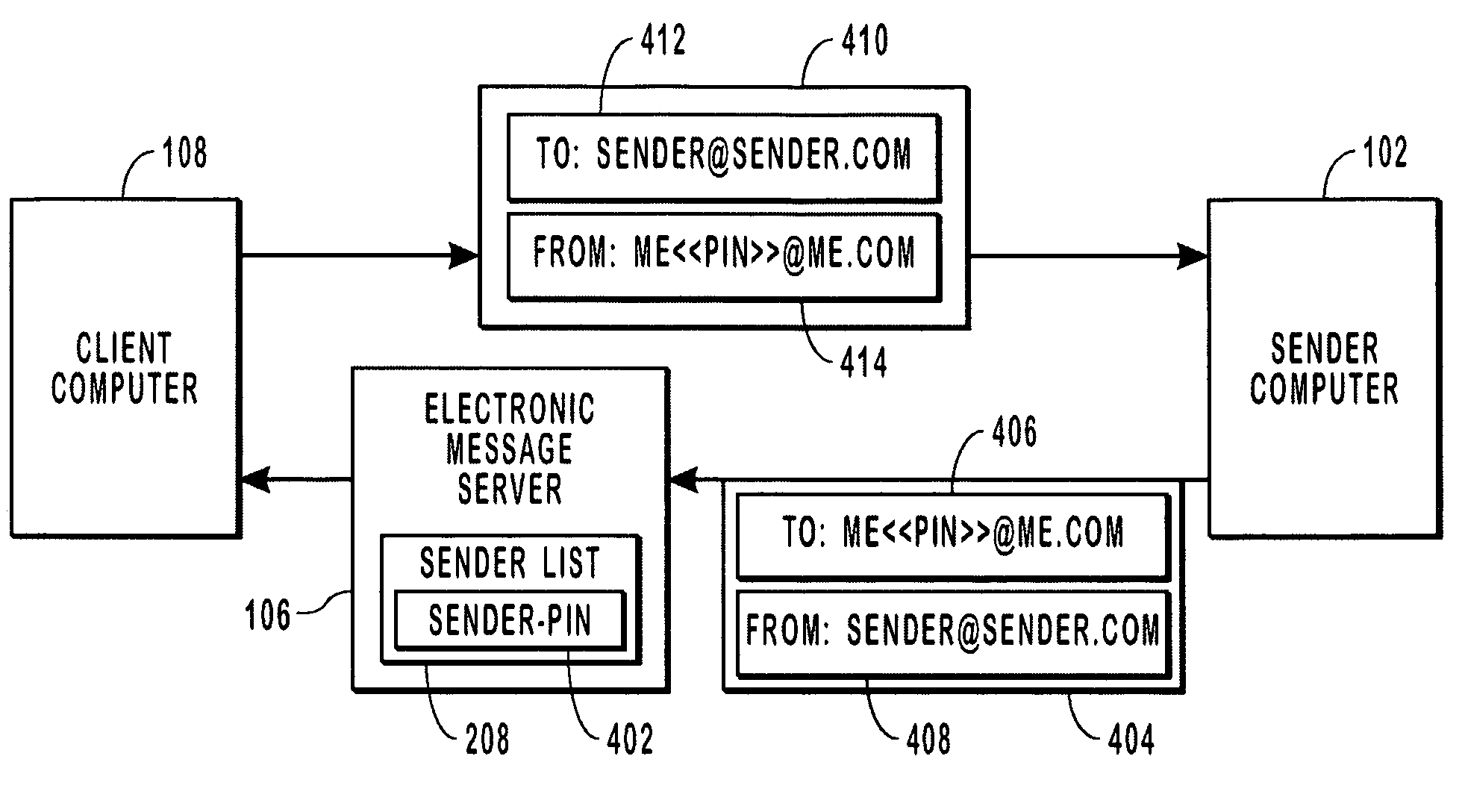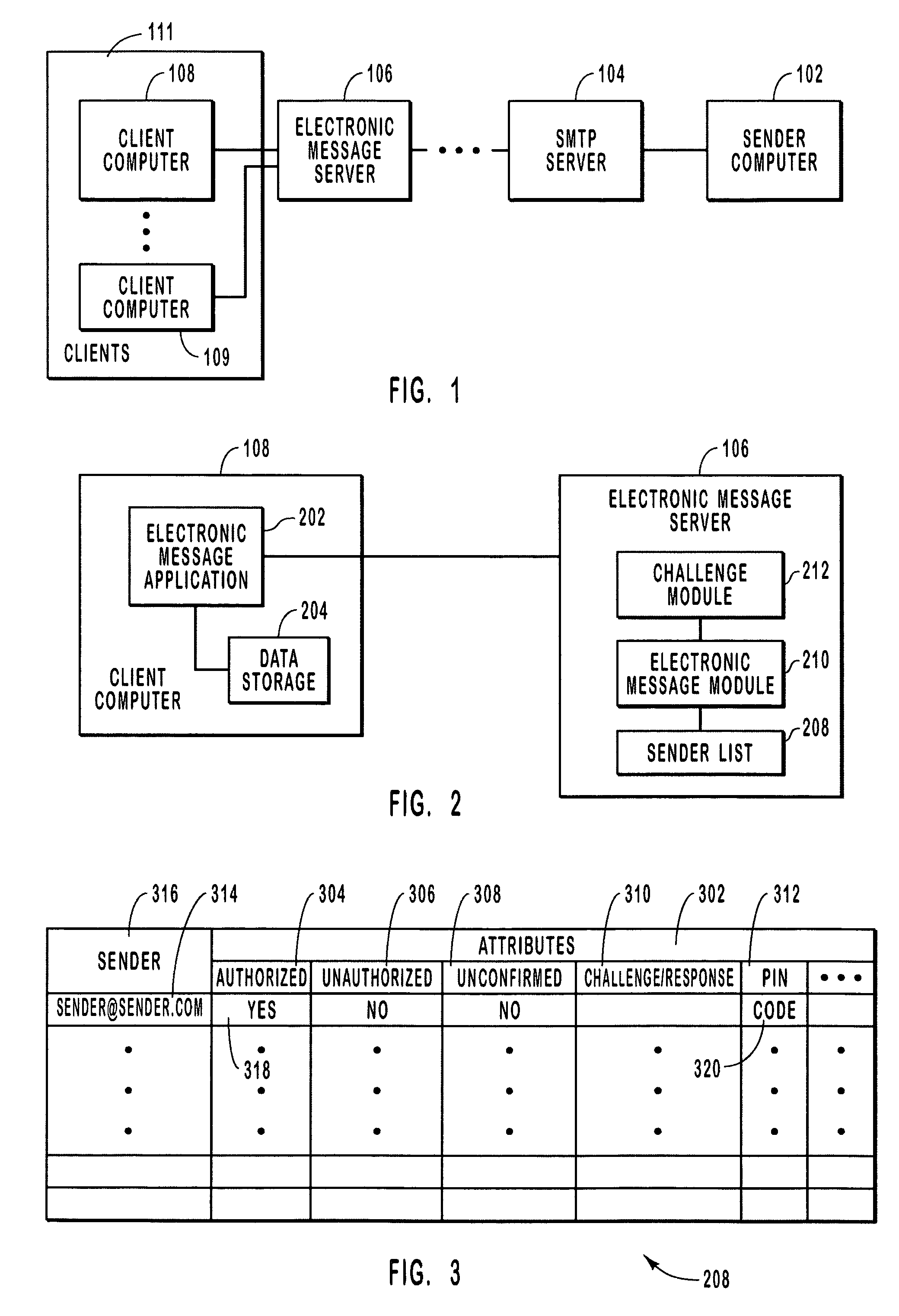Filtering electronic messages while permitting delivery of solicited electronics messages
- Summary
- Abstract
- Description
- Claims
- Application Information
AI Technical Summary
Benefits of technology
Problems solved by technology
Method used
Image
Examples
Embodiment Construction
[0024]Many of the electronic messages delivered to the inboxes of users today are unsolicited. User addresses are available from a variety of sources and various senders utilize those sources to generate and send unsolicited electronic messages. However, there are many instances where electronic messages are solicited. The distinction between an unsolicited electronic message and a solicited electronic message is often dependent on the perspective of the intended recipient. Some recipients have specifically requested certain electronic messages while other recipients view the same electronic messages as unsolicited.
[0025]The term “electronic messaging” includes any form of sending a message electronically including, but not limited to, via electronic mail (“email”), instant messaging, and other forms of electronic communication that involve the use of a sender address and a client or user address. Electronic messages including emails, instant messages, and other forms or electronic ...
PUM
 Login to view more
Login to view more Abstract
Description
Claims
Application Information
 Login to view more
Login to view more - R&D Engineer
- R&D Manager
- IP Professional
- Industry Leading Data Capabilities
- Powerful AI technology
- Patent DNA Extraction
Browse by: Latest US Patents, China's latest patents, Technical Efficacy Thesaurus, Application Domain, Technology Topic.
© 2024 PatSnap. All rights reserved.Legal|Privacy policy|Modern Slavery Act Transparency Statement|Sitemap



